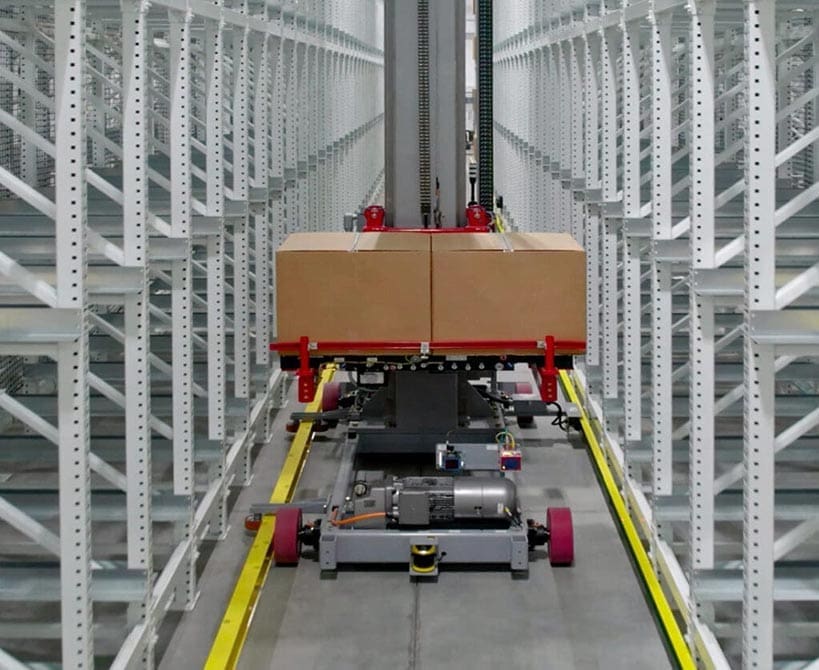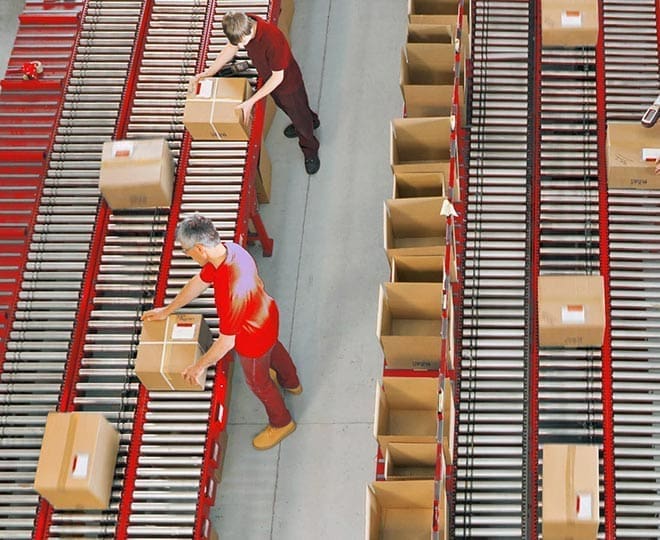Surviving the Peak Season Fulfillment: Warehouse Best Practices
Picture this: It’s November, and your warehouse is buzzing with activity. Orders are flooding in faster than ever; your order picking teams are scrambling to keep up, and you’re wondering if you’ll make it through another warehouse peak fulfillment season without losing your mind—or your customers. Sound familiar?
If you’re nodding your head, you’re not alone. Peak season can make or break a warehouse operation, and the stakes have never been higher. With e-commerce sales hitting astronomical numbers and customer expectations soaring, the pressure on distribution centers to perform flawlessly during these critical periods is intense.
But here’s the thing: it doesn’t have to be this way. Smart warehouse managers are already taking action, implementing strategies and technologies that don’t just survive peak season—they thrive during it. The question is, will you be ready when the next wave hits?
Understanding the Reality of Peak Order Fulfillment Season Challenges
What Peak Picking Season Really Means for Your Operation
“A peak picking season is when, throughout the course of a year, (warehouse/DC) activities are at higher levels than they are on an average day,” explains Ed Romaine, VP of Marketing and Business Development for ISD. And just like snowflakes, no two companies’ peaks are exactly alike.
Your busiest season might be the holiday rush, the surge in ski gear orders in late fall, spring’s mountain bike boom, or back-to-school clothing spikes. Some businesses face several peaks year-round, requiring teams to stay ready for constant demand.
The challenge isn’t just about handling more orders—it’s about maintaining quality, accuracy, and speed when everything is moving at a breakneck pace. It’s about keeping your customers happy while your systems are pushed to their absolute limits.
The Continued Labor Crisis in Warehousing
Here’s a sobering statistic that should make every warehouse manager sit up and take notice: while 80% of Americans believe the country would be better off with more U.S. manufacturing jobs, only 25% think they themselves would be better off working in a factory. What’s even more telling? Less than 15% would actually take a manufacturing job.
“Labor will make or break you in this business,” says Romaine when asked about peak warehouse season pain points. “For the last decade or so, the toughest thing has been to get people to work in a warehouse.” This labor shortage isn’t just a numbers game—it’s a fundamental shift in how we need to think about warehouse operations.
The Hidden Costs of Peak Warehouse Season Chaos
Labor Shortages and Training Nightmares
Even if you manage to find enough workers, the challenges don’t stop there. There’s the time and expense of training new employees, the constant worry about turnover, and the reality that seasonal workers rarely return year after year.
Every new hire represents an investment in training, uniforms, safety equipment, benefits, and administrative overhead. When that person leaves after just a few weeks, that investment walks out the door with them. It’s a costly cycle that many warehouses find themselves trapped in.
Throughput Bottlenecks That Kill Profits
Human performance varies dramatically—not just from person to person, but from hour to hour, shift to shift. Workers get tired, distracted, or overwhelmed. They call in sick or get injured. These natural human limitations create unpredictable bottlenecks that can cripple your operation when you need it most.
The ripple effects are massive. A slowdown in picking leads to delayed shipments, which leads to unhappy customers, which leads to lost business and damaged reputation. In today’s competitive marketplace, you simply can’t afford these kinds of disruptions.
Physical Space Limitations
Here’s something many managers overlook: throwing more bodies at the problem doesn’t often work. If only four employees can fit safely in an aisle, or only two can work at a particular workstation, then having ten more people standing around doesn’t solve anything. Physical constraints often limit your ability to scale up during peak periods. This pertains to not only manual operations, but also automated systems if not planned properly.
Strategic Planning: Your First Line of Defense
Data-Driven Demand Forecasting
“It starts off with the numbers and knowing the data, your forecast, and demand,” Romaine emphasizes. “You need to have accurate numbers.” Those numbers aren’t just nice-to-have information—they’re the foundation of your entire peak picking season and business strategy.
You need to know exactly how many SKUs you’re managing, what your current inventory levels are, and what your typical order profiles look like. But don’t stop there. Dive deeper into seasonal trends, analyze what sold well during previous peak periods, and keep your finger on the pulse of emerging trends that could impact demand. “Always remember, in this industry if you live by using averages, you will die a painful death, says Romaine.
SKU Analysis and Optimization
Not all SKUs are created equal, especially during peak order fulfillment season. Analyze your historical data to identify which products drive the most volume during peak periods. These items should get priority placement in your most efficient picking locations. Consider implementing ABC analysis to categorize your inventory and optimize your storage strategy accordingly.
Inventory Management Best Practices
Smart inventory management during peak picking season isn’t just about having enough stock—it’s about having the right stock in the right place at the right time. This means positioning your fastest-moving items in easily accessible locations (slotting), implementing real-time inventory tracking systems, and having contingency plans for unexpected demand spikes.
Technology Solutions That Actually Work
Automated Storage and Retrieval Systems (ASRS)
This is where the game really changes. While traditional warehouses struggle with all the challenges we’ve discussed, facilities with ASRS technology are operating in a different league entirely. These systems don’t just help during peak season—they transform how you think about peak season.
The Game-Changing Benefits of Automation
“ASRS will reduce up to two-thirds of your labor,” says Romaine. Think about that for a moment. Instead of scrambling to find and train dozens of seasonal workers, you’re working with a system that handles the heavy lifting automatically.
But it’s not just about reducing headcount. ASRS systems maintain consistent velocity and accuracy rates that human workers simply can’t match. We’re talking about 99.97% accuracy levels that don’t fluctuate based on who’s having a bad day or who called in sick.
Reducing Labor Dependency by Two-Thirds
When you reduce your labor dependency by two-thirds, you’re not just saving on wages and benefits. You’re eliminating the time and cost of recruitment, training, and turnover. You’re reducing workers’ compensation claims, safety incidents, and the countless headaches that come with managing a large seasonal workforce.
Not All ASRS is Created Equal
By knowing your data, your business forecast, and consumer trends, you build out the logical path for automation and its required return on investment (ROI). Automation for automation sake is not a sustainable business… its more like a hobby.
Several technologies that could be significant for your business, depending on its needs, include:
- Mid-Load ASRS System – provides an incredibly reliable and cost-effective means of storing, staging, sequencing, and buffering pallets, totes, cases, and unique form factor inventories. Its reliability (no single point of failure) and space savings make this a fast ROI technology.
- URBX Vertical Robotic ASRS System – for automated case or split-case picking applications, this system can utilize every inch of available height up to 110 feet tall. Its incredibly fast throughput robotic elements and workstation flexibility make it an essential system to evaluate.
- UltraBatch Dynamic Batch Picking System – allows any goods-to-person system you currently have or decide to implement to be up to 30% faster. By eliminating a significant portion of operators handling totes, cases, and open orders, this automated light directed system can turn a holiday crush to just busy.
- Mushiny Shelf-to-Person AMRs and portable sortation systems are often perfect for peak seasons. The AMRs field can be expanded and contracted quickly and easily based on demand. The portable 3D sortation systems allow orders and inventory to be automatically consolidated. The best part is both systems can be expanded or contracted based on peak vs. non-peak activity.
- And so many other technologies…
Optimizing Your Warehouse Layout for Peak Warehouse Season Performance
Flexible Pick Station Configurations
One of the smartest strategies for peak warehouse season success is building flexibility into your operation. “There are systems you can flex with peak activity,” Romaine explains. “It might be using all of the pick stations that you have set up. It might be setting up temporary pick stations for peak time and then taking them down and utilizing that floor space for more value-added activities.”
This approach allows you to scale up during peak periods without committing to permanent changes that might not make sense year-round. It’s like having a warehouse that can expand and contract based on your needs.
Maximizing Floor Space Utilization
Every square foot of your warehouse costs money, so you need to make sure you’re using it efficiently. During peak picking season, this becomes even more critical. Consider how you can reconfigure your space to maximize throughput while maintaining safety standards.
Temporary Solutions for Peak Order Fulfillment Season
Don’t overlook the power of temporary solutions. Whether it’s additional pick stations, temporary storage areas, trailers parked at open dock doors for emergency storage, or even leased equipment, these short-term investments can provide the flexibility you need to handle peak volumes without the long-term commitment.
The Power of Predictable Performance
Maintaining 99.97% Accuracy Under Pressure
Here’s where automation really shines. While human performance degrades under pressure, automated systems maintain their accuracy rates regardless of volume. “ASRS systems can maintain velocity (speed of throughput) at consistent levels with 99.97 percent accuracy,” notes Romaine.
This consistency is invaluable during peak order fulfillment season when every mistake costs time and money. Returns, reshipments, and customer service issues all drain resources that you need focused on processing orders.
Scaling Operations Up and Down Seamlessly
“The system can also be dialed up or down to meet peak and non-peak requirements,” Romaine explains. This scalability means you can precisely match your capacity to your demand, optimizing both efficiency and cost.
Unlike human workers who always work at varying speeds, automated systems can adjust their performance levels almost instantaneously. This responsiveness is crucial for navigating the unpredictable nature of peak season demand.
Returns Management: The Forgotten Peak Period
January Returns Rush Planning
Here’s something many warehouse managers don’t think about (or prefer not to think about): returns. For many retail operations, the first three weeks of January can be just as busy as the three weeks before Christmas—but with returns instead of outbound orders.
“Many ASRS systems can be designed to operate for returns in addition to order fulfillment,” Romaine points out. This dual capability means your peak order fulfillment season investment continues to pay dividends even after the initial rush is over.
Automated Returns Processing
Returns processing can be just as labor-intensive as order fulfillment, if not more so. Each returned item needs to be inspected, categorized, and processed back into inventory. Automation can streamline this process, reducing the time and labor required to handle returns efficiently.
Workforce Optimization Strategies
Training Programs That Stick
If you’re still relying heavily on human workers, make sure your training programs are designed for retention and effectiveness. Focus on cross-training employees so they can handle multiple roles, reducing their vulnerability to call-outs or turnover.
Real-World Implementation: Making It Happen
Phased Automation Approach
You don’t have to automate everything at once. Start with your biggest pain points and highest-volume processes. This phased approach allows you to see immediate benefits while building toward a more comprehensive automation strategy. The important factor is to assure an ROI for each phase.
Cost-Benefit Analysis
When evaluating automation investments, don’t just look at the upfront costs. Consider the total cost of ownership, including maintenance, training, and ongoing support. Factor in the cost savings from reduced labor, improved accuracy, and increased throughput.
The ISD OptimalOps-Process Advantage
8-Step Framework for Peak Picking Season Success
At ISD, we understand that successful peak season preparation requires more than just throwing technology at the problem. Our OptimalOps-Process™ provides a comprehensive framework that addresses every aspect of your operation, from initial assessment through ongoing optimization.
Customized Solutions That Drive ROI
“As a systems integrator, we get to know your data,” Romaine explains. “We know how fast it can move. We know how many SKUs it can hold. We know all the little details that go into ASRS and other automation and are able to plan.”
This expertise allows us to design solutions that aren’t just technically sound—they’re specifically optimized for your business and unique peak season challenges. Whether you’re dealing with holiday rushes, seasonal produce, or industry-specific peaks, we can help design and tailor a solution that maximizes your ROI.
Your Path to Peak Warehouse Season Mastery
The next peak season is coming whether you’re ready or not. The question is: will you be scrambling to keep up, or will you be confidently managing a well-oiled machine that handles peak volumes with ease?
The companies that thrive during peak season don’t just work harder—they work smarter. They invest in the right technologies, implement proven processes, and partner with experienced integrators who understand the unique challenges of seasonal operations.
“An ASRS and other automation systems will dramatically reduce an operation’s reliance on labor and create a far more predictable performance,” Romaine concludes. This predictability is what separates successful peak season operations from those that struggle to keep up.
Don’t wait until you’re in the middle of your next peak season to start planning. The time to act is now. Contact ISD today to learn how our OptimalOps-Process™ can transform your peak season from a period of stress and uncertainty into a time of confident, predictable success.
Peak Picking Season Order Fulfillment Frequently Asked Questions
Q: How much can ASRS really reduce my labor requirements during peak warehouse season?
A: According to Ed Romaine, “ASRS will reduce up to two-thirds of your labor.” This dramatic reduction means you’ll need fewer seasonal workers, reducing recruitment, training, and turnover costs while maintaining consistent performance levels.
Q: What’s the typical ROI timeline for warehouse automation investments?
A: While ROI varies based on your specific situation, most facilities see significant returns within 18-24 months is common. The combination of reduced labor costs, improved accuracy, and increased throughput typically provides compelling financial benefits that accelerate during peak seasons.
Q: Can I implement automation solutions temporarily just for peak season?
A: Yes! Many warehouses lease additional automated systems and equipment specifically for peak periods. This approach allows you to handle seasonal volume spikes without the long-term commitment of permanent infrastructure investments.
Q: How do I know if my warehouse is ready for automation?
A: The best way to determine readiness is through a comprehensive assessment of your current operations, peak picking season challenges, and growth projections. ISD’s OptimalOps-Process includes detailed analysis to identify the most impactful automation opportunities for your specific situation.
Q: What happens to my existing workforce when I implement automation?
A: Automation typically allows you to redeploy workers to higher-value activities rather than eliminate positions entirely. Many facilities find that automation helps them better utilize their existing workforce while reducing their dependence on seasonal hiring.








